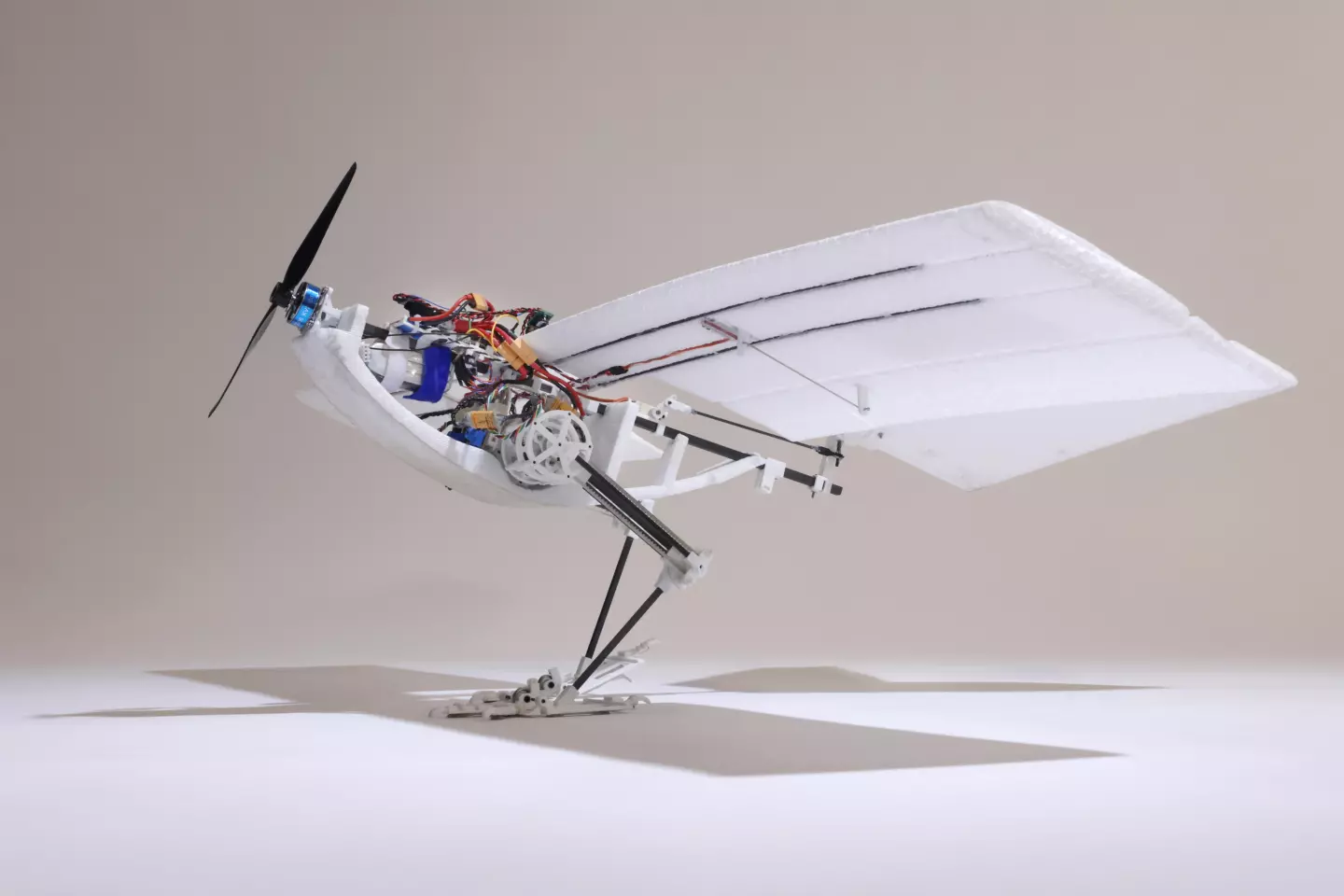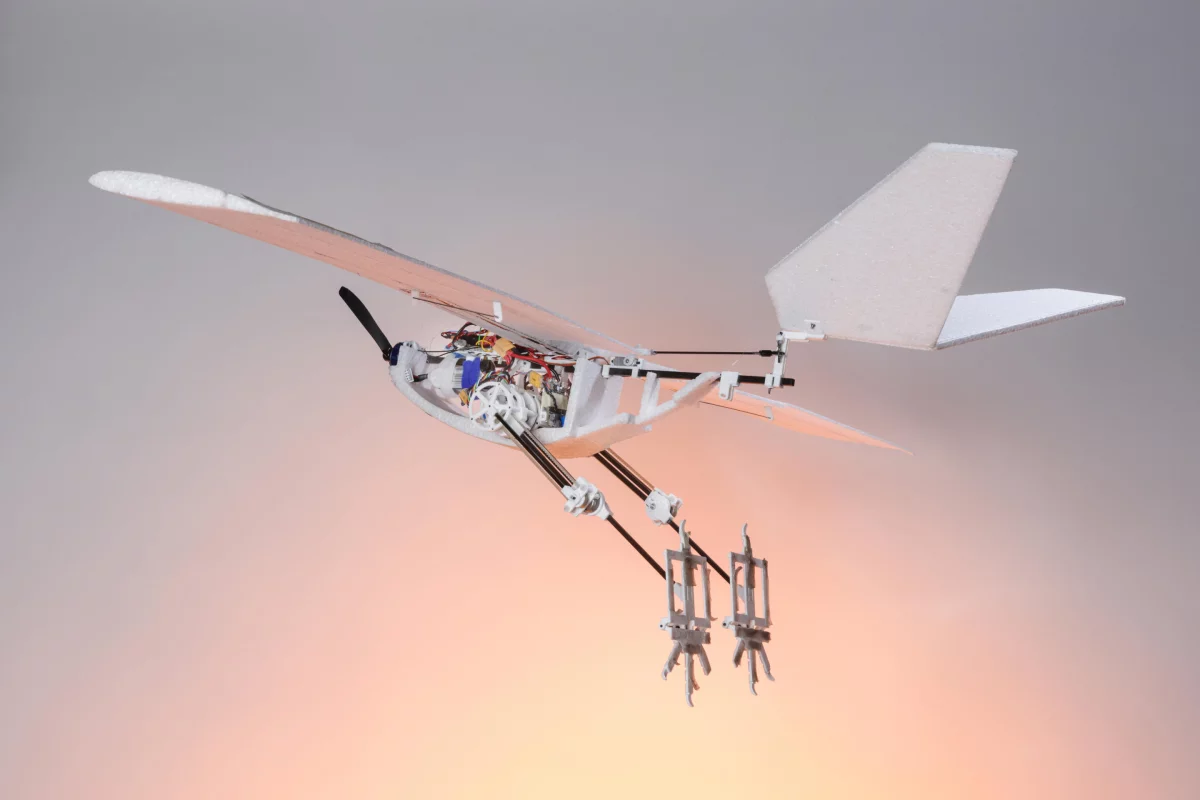While autonomous flying robots have some intriguing potential applications, their usefulness is limited if they can't move across uneven terrain once they land. An experimental new bio-inspired bot can do so, however, by mimicking the gait of the raven.
Appropriately enough named RAVEN (Robotic Avian-inspired Vehicle for multiple ENvironments), the device was developed by Won Dong Shin and colleagues at Switzerland's EPFL university. And while it may look like a flapping-wing robot, it actually flies via a combination of two semi-fixed wings and a propeller.
RAVEN's real selling point, though, is its multi-jointed legs.
Although they're not as anatomically complex as those of an actual raven, they do mimic the articulated hips, ankles and feet of real raven legs. This arrangement allows the robot to walk (alternately placing one foot in front of the other), hop over gaps or small obstacles, and jump up onto raised surfaces.

Just like a real raven, the robot is also capable of jumping into takeoff when starting a flight. Tests showed that boosting takeoff speed in this manner was considerably more energy-efficient than taking off without a jump.
"Multifunctional robot legs expand the opportunities to deploy traditional fixed-wing aircraft in complex terrains through autonomous take-offs and multimodal gaits," the scientists state in a paper on their research, which was recently published in the journal Nature.
You can see RAVEN in walking, hopping, jumping and flying action, in the video below.
Source: Scimex





